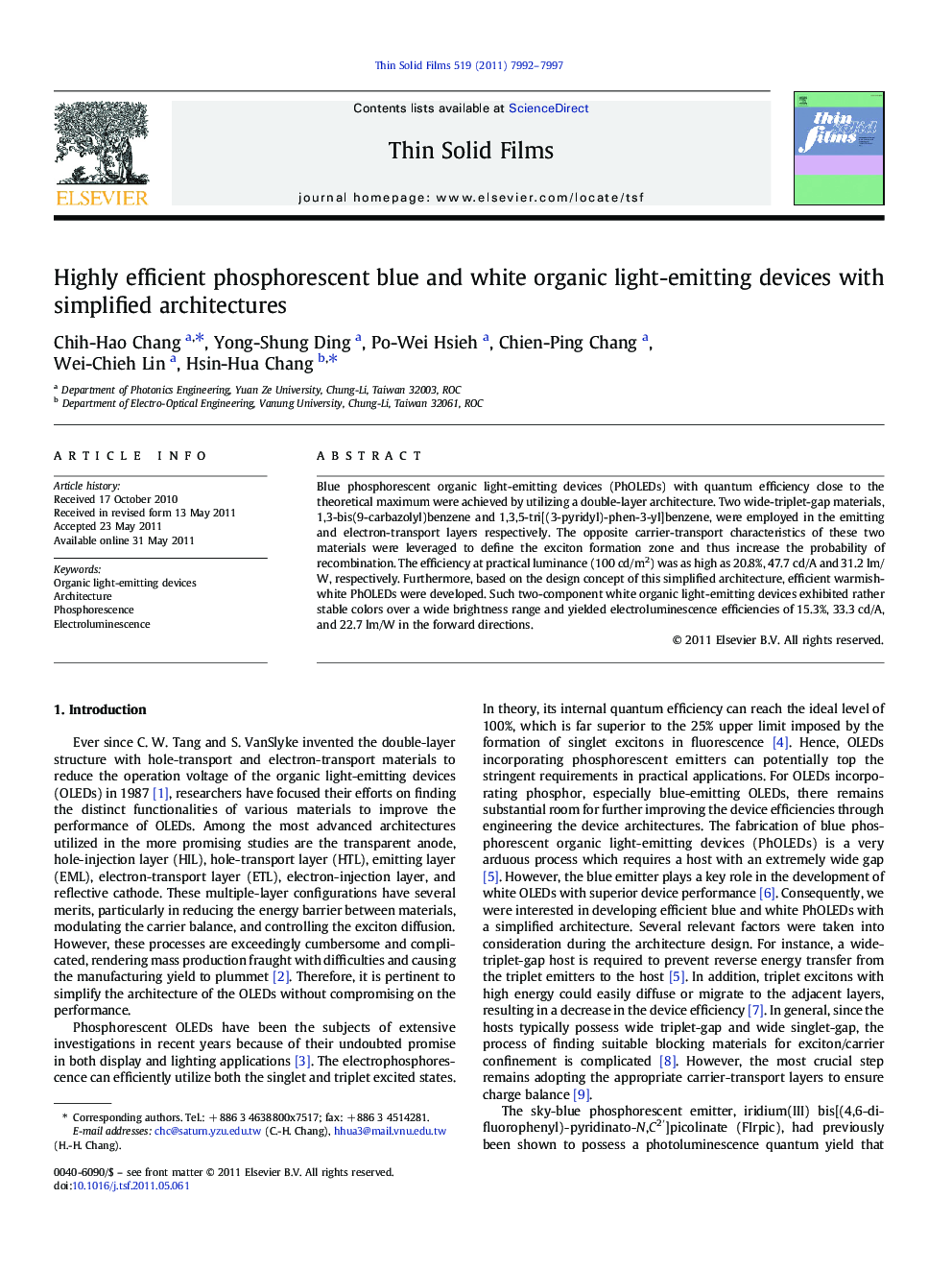| Article ID | Journal | Published Year | Pages | File Type |
|---|---|---|---|---|
| 1667815 | Thin Solid Films | 2011 | 6 Pages |
Abstract
Blue phosphorescent organic light-emitting devices (PhOLEDs) with quantum efficiency close to the theoretical maximum were achieved by utilizing a double-layer architecture. Two wide-triplet-gap materials, 1,3-bis(9-carbazolyl)benzene and 1,3,5-tri[(3-pyridyl)-phen-3-yl]benzene, were employed in the emitting and electron-transport layers respectively. The opposite carrier-transport characteristics of these two materials were leveraged to define the exciton formation zone and thus increase the probability of recombination. The efficiency at practical luminance (100Â cd/m2) was as high as 20.8%, 47.7Â cd/A and 31.2Â lm/W, respectively. Furthermore, based on the design concept of this simplified architecture, efficient warmish-white PhOLEDs were developed. Such two-component white organic light-emitting devices exhibited rather stable colors over a wide brightness range and yielded electroluminescence efficiencies of 15.3%, 33.3Â cd/A, and 22.7Â lm/W in the forward directions.
Related Topics
Physical Sciences and Engineering
Materials Science
Nanotechnology
Authors
Chih-Hao Chang, Yong-Shung Ding, Po-Wei Hsieh, Chien-Ping Chang, Wei-Chieh Lin, Hsin-Hua Chang,
